February 2025
The global egg freezing and embryo banking market size is calculated at USD 5.41 billion in 2024, grew to USD 6.32 billion in 2025 and is anticipated to reach around USD 25.63 billion by 2034. The market is expanding at a healthy CAGR of 16.83% between 2024 and 2034. The Europe egg freezing and embryo banking market size is evaluated at USD 1.95 billion in 2024 and is expected to grow at a fastest CAGR of 16.95% during the forecast year.
The global egg freezing and embryo banking market size accounted for USD 5.41 billion in 2024 and is anticipated to be worth around USD 25.63 billion by 2034, registering at a double-digit CAGR of 16.83% from 2024 to 2034. The increasing cases of infertility cases, late pregnancies, and other lifestyle factors are contributing to the growth of the market.
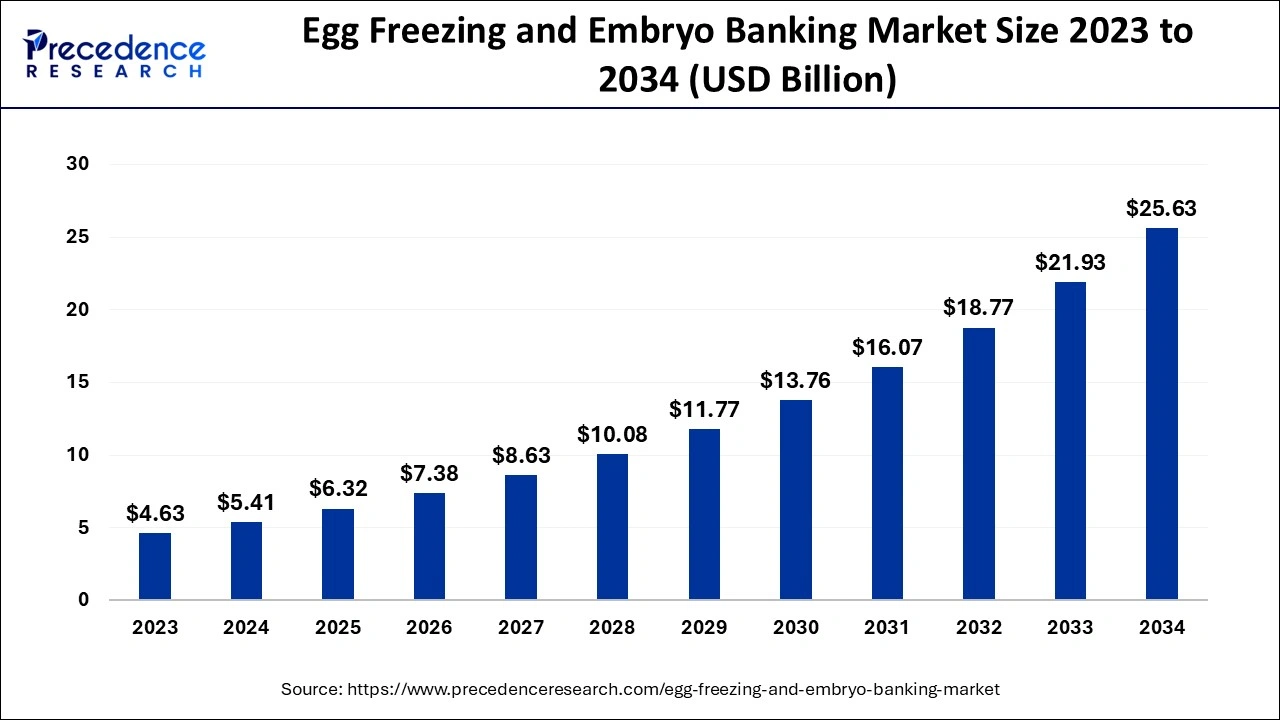
The Europe egg freezing and embryo banking market size is exhibited at USD 5.41 billion in 2024 and is projected to surpass around USD 25.63 billion by 2034, growing at a CAGR of 16.83% from 2024 to 2034.
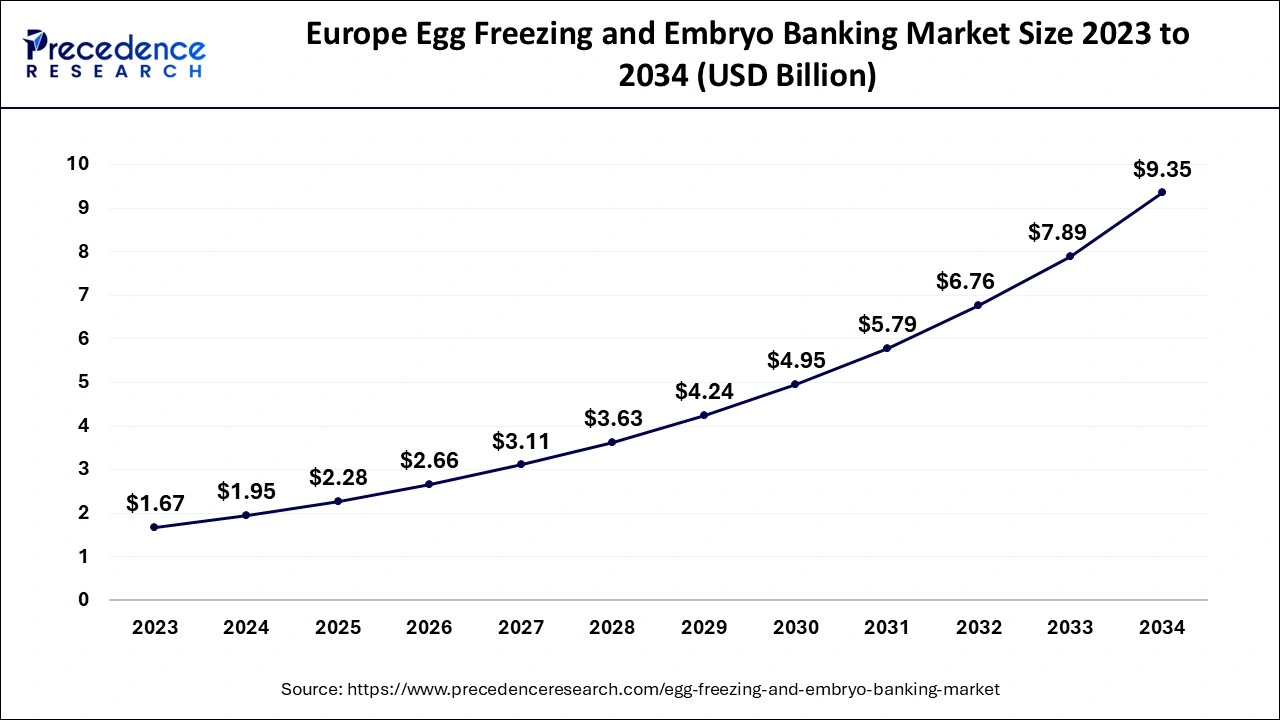
Europe dominated the egg freezing and embryo banking market in 2023. The growth of the market is attributed to the rising cases of infertility and the rising preference for late pregnancy in women is driving the growth of the market. The rising urbanization, poor eating and sleeping habits, and rising consumption of canned food due to poor environmental conditions are severally affecting women’s health, impacting the fertility rate, and rising consumption of alcohol and smoking are collectively causing the fertility issues which collectively driving the growth of the egg freezing and embryo banking market in the region.
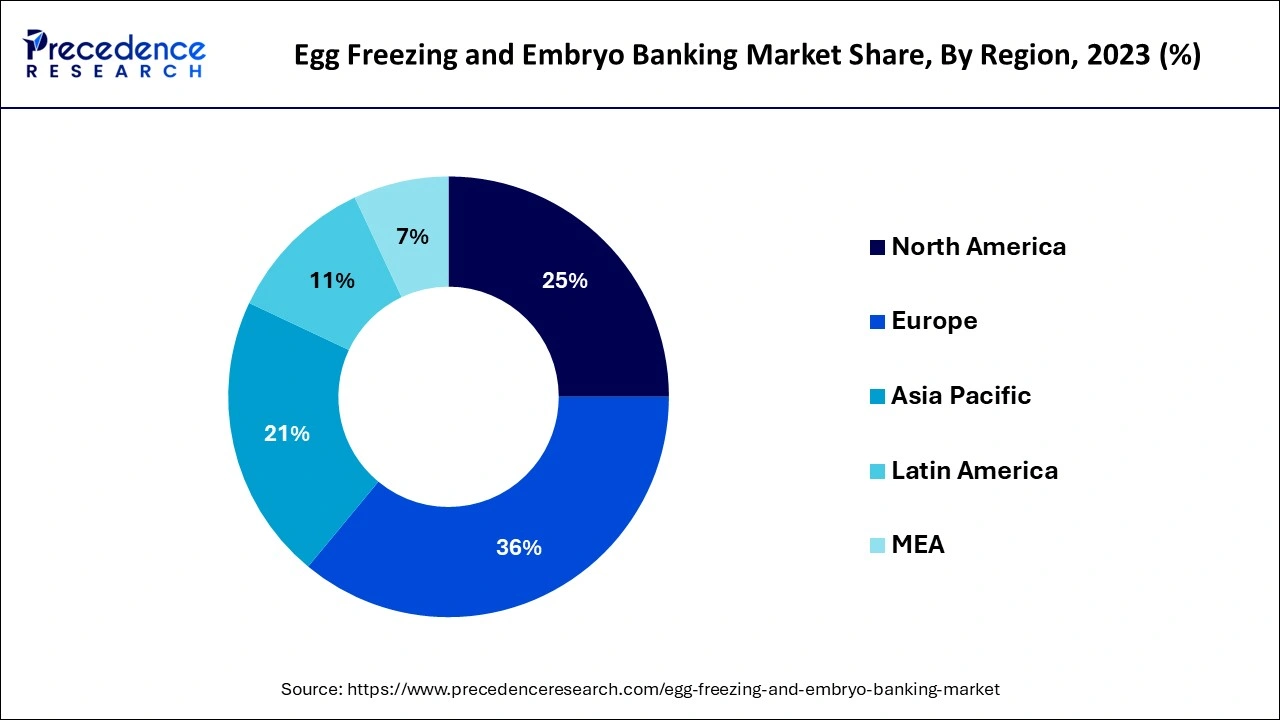
Asia Pacific is expecting the fastest growth during the forecast period. The growth of the market is attributed to the rising population, and the shifting lifestyle preferences are causing health issues. The rising economic burden, job security, high cost of living, inflation, and other factors are driving people towards late pregnancies and childbirth. The rising infertility issues in leading countries like India and China due to rising consumption of smoking and alcohol are collectively driving the growth of the egg freezing and embryo banking market across the region.
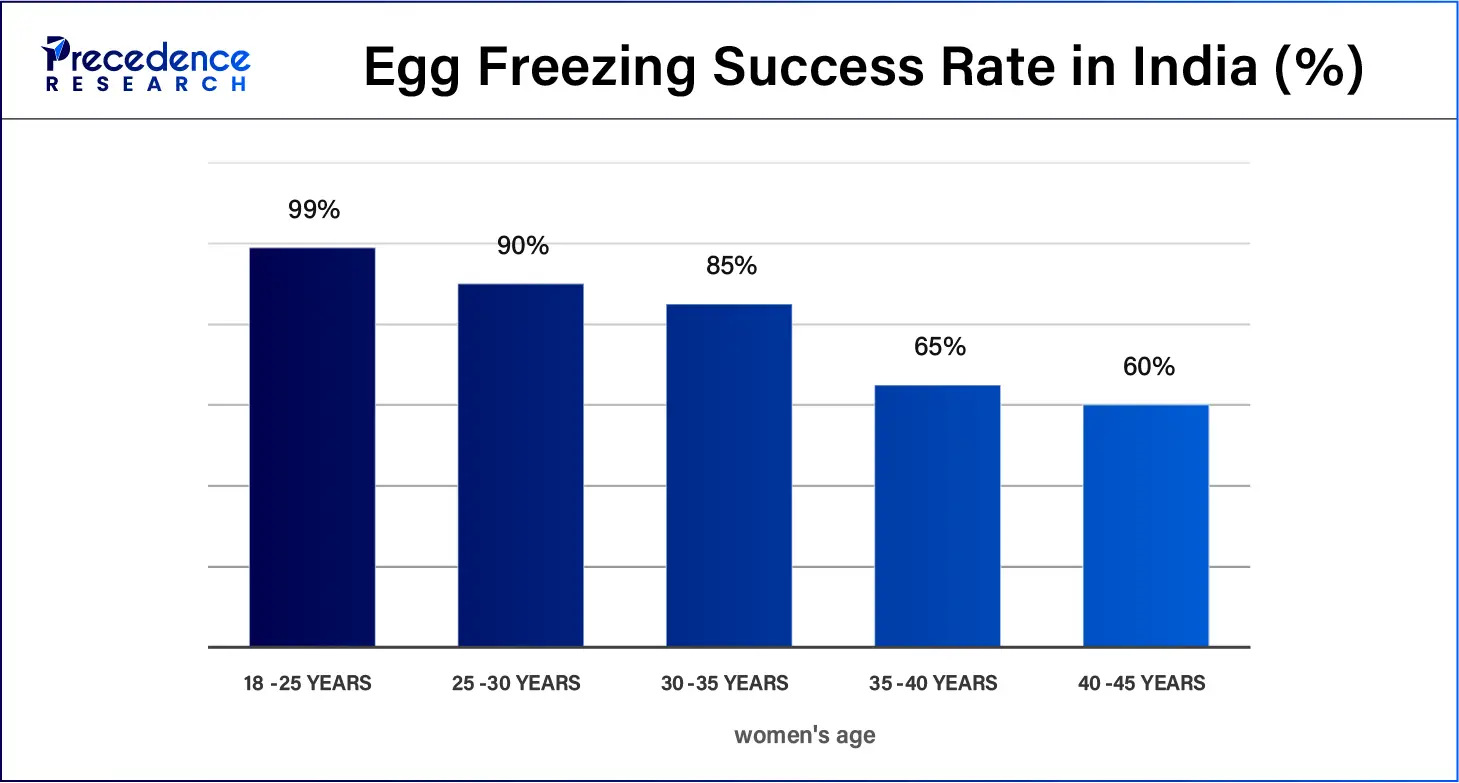
Embryo freezing or banking is also known as the cryopreservation. Egg freezing or embryo banking is the emerging field of healthcare that helps people who are suffering from late pregnancy and other fertility-related issues. The embryo is the egg, which is fertilized by sperm. Embryo banking is the process of storing or freezing embryos for further use. The process is a great solution for people who are looking to conceive a pregnancy, have fertility issues, and reproduce. Embryo freezing is normally done when the people getting the treatment try to get pregnant; during this treatment, fertilization occurs in eggs with sperm, which sometimes creates extra embryos that can be frozen for later use.
How Can AI Impact the Egg Freezing and Embryo Banking Market?
Artificial intelligence is revolutionizing the healthcare or medical field with its great enhancement in technology. The integration of AI in IVF and egg-freezing technology is significantly impacting the overall process with greater precision and advancements. AI in egg freezing and IVF is transforming fertility treatment by enabling a personalized approach for aspiring parents and increasing success rates. The AI helps IVF clinics with its enhanced algorithms, which provide valuable insights by identifying patterns from the vast amount of patient data, including genetic profiles, medical records, and lifestyle. All these data create valuable insights and help clinicians to make personalized treatment plans for the patients.
| Report Coverage | Details |
| Market Size by 2034 | USD 25.63 Billion |
| Market Size in 2024 | USD 5.41 Billion |
| Market Size in 2025 | USD 6.32 Billion |
| Market Growth Rate from 2024 to 2034 | CAGR of 16.83% |
| Largest Market | Europe |
| Base Year | 2023 |
| Forecast Period | 2024 to 2034 |
| Segments Covered | Type, Preservation, Age of Patient, and Regions |
| Regions Covered | North America, Europe, Asia-Pacific, Latin America, and Middle East & Africa |
Increasing socioeconomic factors are causing late pregnancies in couples
The rising infertility rate among the population is one of the leading factors in the growth of the egg-freezing and embryo-banking market. The rising acceptance by women or families for choosing late pregnancies due to various personal and social issues such as rising economic burden, health concerns, job security, rising inflation rate, unaffordability in housing, and several other reasons stopping people from the conception of childbirth. Egg freezing allows women to preserve their fertility via the egg freezing process despite aging factors and ineffective treatment of fertility at older ages. Additionally, the rising carrier orientation in women is one of the causes of late pregnancies and is contributing to the egg freezing and embryo banking market.
Undefined success rate
The success rate of egg freezing and embryo banking is undefined. The success of egg freezing depends upon the woman’s age at the time of egg freezing, the number of eggs thawed and retrieved, and others. Additionally, the lowered rate of pregnancies via egg freezing, in-process damaging the embryos or eggs, are collectively limiting the adoption of the egg freezing and embryo banking market.
Advancements in egg freezing and embryo banking
The technological advancements in egg freezing, such as oocyte vitrification, help reduce the ice crystals that lead to damaging embryo cells, and the techniques help extend the survival rate of the embryos and eggs. Cryotec is an enhanced technology that helps produce an almost 100% survival rate of eggs. Furthermore, the rising research on technological advancements in medical science and the field of IVF and embryo banking is driving opportunities for growth in the egg freezing and embryo banking market.
The nondonor segment dominated the egg freezing and embryo banking market in 2023. The rising preference in women to have their eggs for fertilization is driving the demand for the nondonor type of egg freezing and embryo banking. Women of lower ages have high-quality eggs and increased chances of egg or embryo survival.
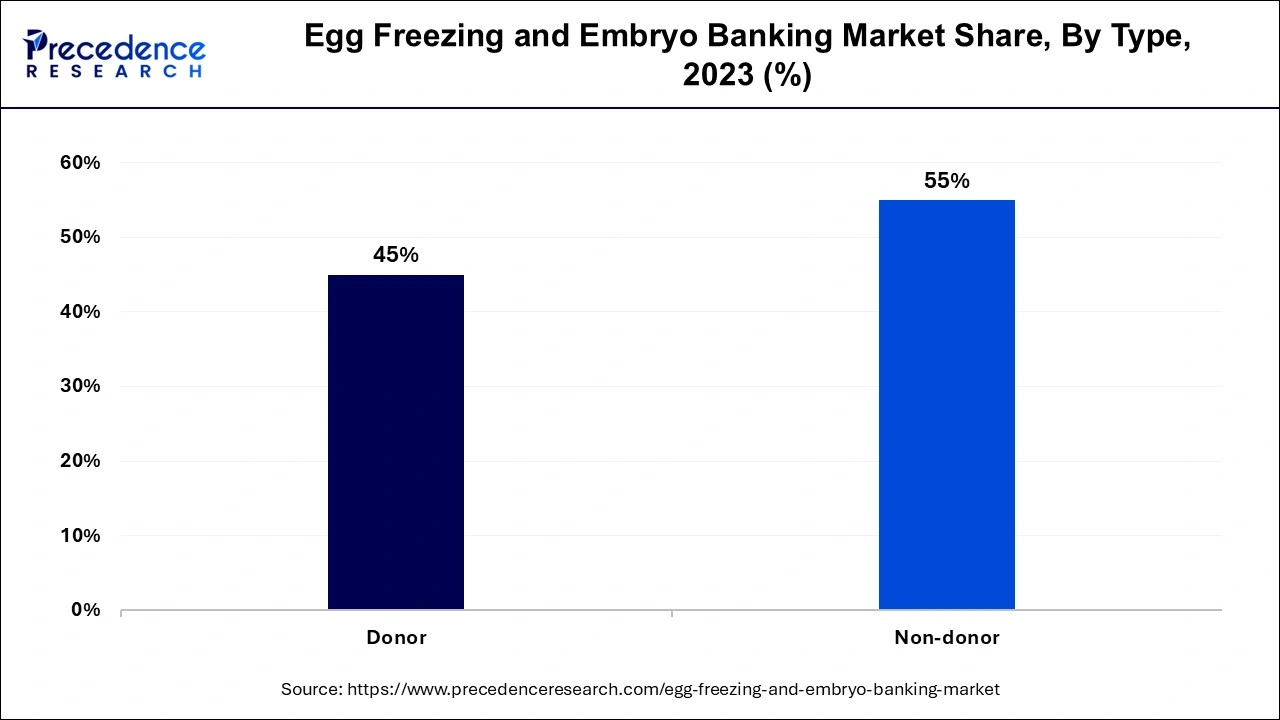
The donor segment will gain a significant share of the market over the studied period of 2023 to 2034. The rising preference for the donor type of egg freezing and embryo banking by the increased aged women due to the lower chances of success rate own egg due to infertility issues, aging factors, and others.
The embryo freezing segment registered its dominance over the market in 2023. Embryo banking is multiple IVF retrieval before going further with an embryo transfer. It is the process that allows the patient to bank their embryos before starting the IVF process. Embryo freezing is a great alternative for people who are looking for delayed pregnancies. Embryo freezing helps preserve fertility, delay pregnancy, treat infertility, reduce the risk of fetal pregnancy, and increase confidence.
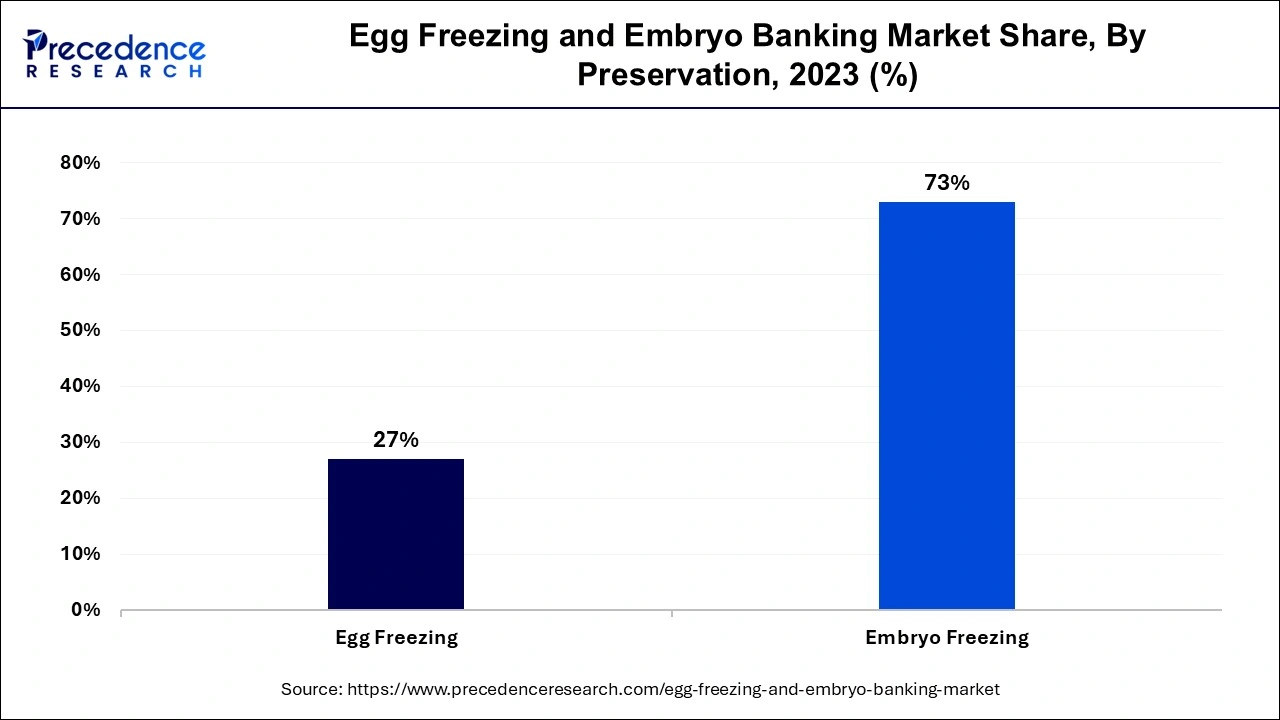
The egg-freezing segment is predicted to witness significant growth in the market over the forecast period. Egg freezing is the process in which women’s eggs are stored, frozen, and extracted to preserve reproductive potential at reproductive age in women. There are several benefits associated with egg freezing, including it helps in preserving fertility and age-related infertility and helps working women plan pregnancy and fertility after chronic illnesses like cancer treatment.
The under-35 segment held a dominant presence in the egg freezing and embryo banking market in 2023. The rising acceptance of egg freezing and embryo banking to preserve their fertility or eggs is driving the growth of the segment. The age under 35 years have a higher chance of success in the fertilization of eggs. Due to the low age, the quality of the eggs is higher, and the success rate of the fertility of eggs is higher.
The 35-37 segment is expected to have substantial growth in the market during the predicted period. The rising preference for adopting egg freezing and embryo banking by women in the age of 35-37 is due to the rising age threat of being infertile by the increasing age. The women at this age are preserving their eggs for further use despite the threat of being infertile.
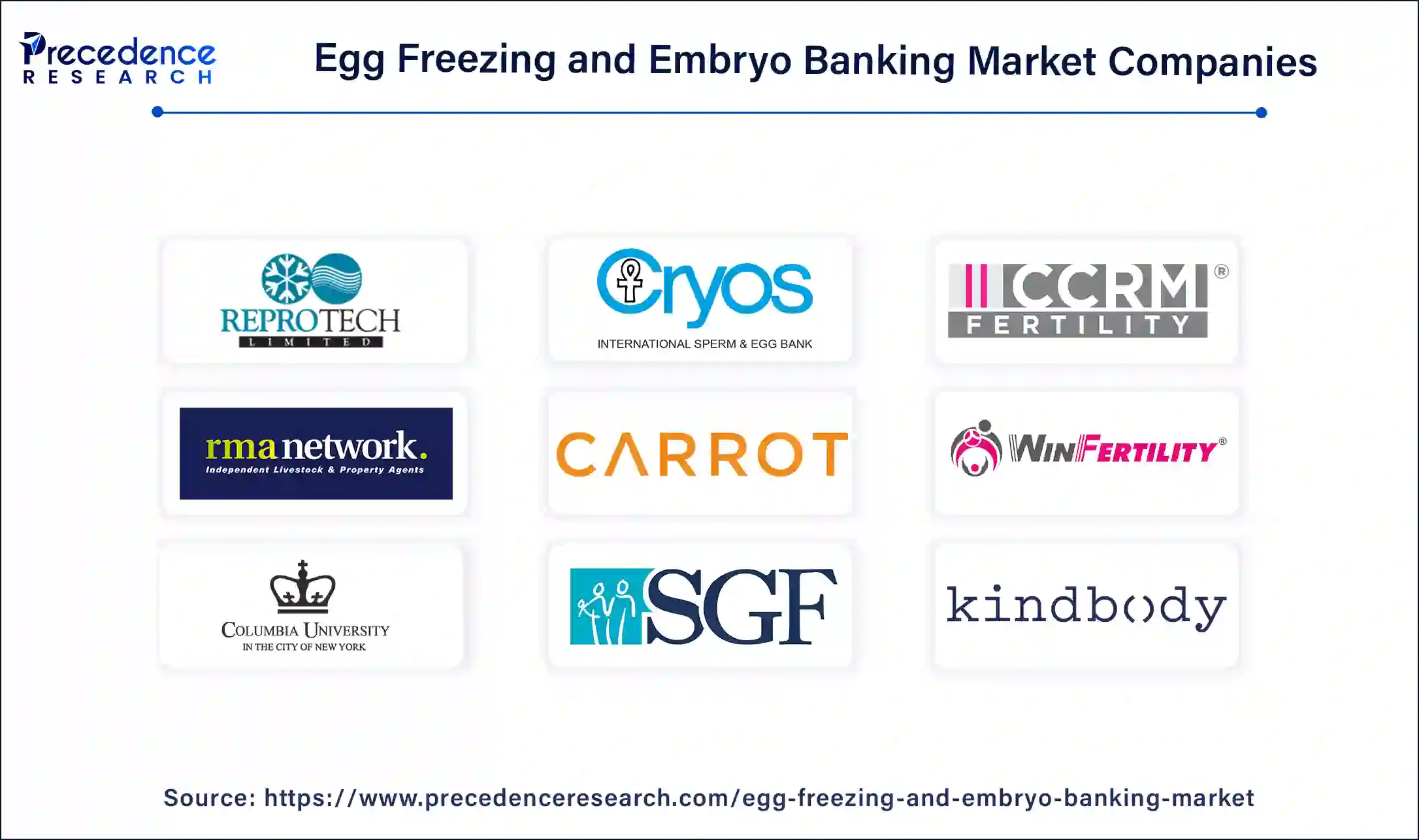
Segments Covered in the Report
By Type
By Preservation
By Age of Patient
By Geography
For inquiries regarding discounts, bulk purchases, or customization requests, please contact us at sales@precedenceresearch.com
No cookie-cutter, only authentic analysis – take the 1st step to become a Precedence Research client
February 2025
July 2024
October 2024
April 2025